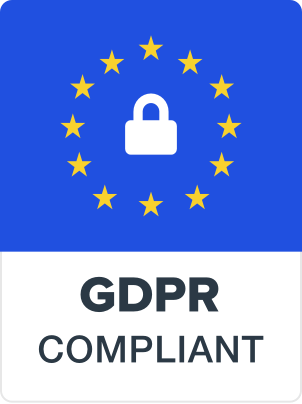Seven Methods to Monitor Your Team’s Workflow

January 13 , 2023
Whether you’ve led large projects before or are new to leading a team, managing your processes is much easier if you know the right techniques to effectively monitor your workflows. According to Statista, when an organization leverages digital document processes, it offers both customers and employees more choice, and demonstrates listening to customer needs and applying strategies to meet those needs.
Many businesses use old-fashioned workflow management software joined with technology that must have been scrapped years ago. We use several different systems in combination, or worse, we keep managing all our projects offline. In all these cases, we are dealing with efficiency killers that create unnecessary hurdles and cause even more headaches as project managers. Consolidate your existing software into one central location and make project monitoring easier than ever.
Read on to learn seven of the best methods to know how to monitor workflow.
-
Gantt Chart

Goodbye spreadsheets! Gantt charts take workflow monitoring to a new level and provide a visual representation of your static to-do list. Charts not only allow you to track everyone’s progress, but they also allow you to effectively plan and centralize all project-related data.
Integrating this monitoring method into the management process makes easier for managers by linking straight to a central dashboard that updates automatically. Forget lagging behind important campaign rollouts along the way.
The Gantt chart is a key feature of workflow actions, giving a 360-degree view of operations. It uses a collaborative drag-and-drop interface that’s perfect for quick decision making and provides a comprehensive project structure without a lot of administration.
-
Kanban Board
Born in the offline world, this visual workflow plan is commonly used by first-time project managers. This is mainly because its simple nature focuses on one important operational principle which it “TO DO”. After completion, the task moves from one column to the next.
As you can imagine, Kanban boards are great for simpler projects and smaller teams that are used to working together. Some projects may not have a very complex workflow or may be driven by a team of company members working remotely. In cases like this, our work management software improves upon the original Kanban board and introduces a range of features specifically designed to help you manage everything more easily, like a project leader.
-
Critical Path Method

The Critical Path Methodology (or CPM) refers to the technique of defining the “critical” path of a project by looking at the longest sequence of tasks that must be completed to get the project from start to finish. You also need to identify tasks that can cause significant delays if not completed on time.
The holistic view is the name of the game here, and the CPM algorithm (part of work management software) helps determine the shortest time it takes to complete each task.
When board members are asked to provide project timelines, they can be more accurate than ever before. No need to enter data manually – UrAudits digital audit software automatically performs the calculations in seconds.
-
PERT
PERT stands for “Program Evaluation and Review Techniques”. It is based on creating what is called a PERT chart. Similar to the Gantt system, the PERT chart is a little harder to read, but gives you a better view of project dependencies.
A classic PERT chart consists of (“nodes”) that represent major project indicators. The lines (“vectors”) represent each task that will help you get there. All facts to an essential goal, ensuring that each and everyone elaborate is on the exact page about where things are and what needs to be done to move things onward.
It is designed to consolidate data across multiple departments, you can monitor progress and create space for good communication. It also helps you find blind spots and “what if” scenarios that you might otherwise not have seen.
-
Work Breakdown Structure

This is a valuable technique that is widely used in the modern workplace. It’s great for visualizing and deconstructing workflows and relies on the principle that projects should be built on the best possible foundation. This foundation is very important in any complex and long-running project, and can directly determine the success or failure of the project after the project is over.
This technique helps define the overall scope of the project so that each outcome and goal can be achieved. It spans three short stages.
- Range plan
- Area definition
- Structural development
The foundation is laid and the focus is on the first stage, where the most time and energy should be invested.
WBS is a particularly useful monitoring technique as it covers initiation, planning, execution and monitoring thoroughly. The main deliverables are outlined and sub-elements are set up to clearly indicate what needs to be done and tracked along the way.
-
Avoid Micromanagement
Micromanagement is a technique that stunts productivity and creativity and is deeply ingrained in some creative agencies. Since every part of every task requires your attention, you can waste a lot of important resources such as time and energy.
If project roles were clearly defined from the start and tailored to the employee’s individual skills, you wouldn’t have to check in with the team ten times a day.
It’s not about throwing in a last-minute request that might confuse your opponent. Most people want to be successful at what they do, but they shouldn’t be seen as stress-tolerant workhorses created to get their approval as leaders and do the company’s bidding.
-
Be Transparent

Transparency serves two main functions in project management is an important requirement for
- Interactions between you and your staff
- Direct communication between the team and the customer involved.
Open communication is the gateway to transparency, and as a project manager you should encourage all stakeholders to do so.
It means acknowledging problems, no matter how big or small, and acting decisively to overcome them, rather than allowing them to linger and jeopardize the overall success of the project. Project management software is especially useful in promoting transparent communication. It also creates a space for all stakeholders to build positive relationships with each other and hold their individual roles accountable to reach the next project milestone. Transparency is a behavior and applies to all kinds of work processes in all kinds of companies.
Conclusion
Now that you have a new methods to choose from, you can apply one or more of them to your next project. This should help identify areas where one of these monitoring techniques might help next time.
An integrated work management software like ours can be very helpful in making the techniques mentioned here practical and concrete. The result is many benefits for you and your team, Increase efficiency and enable data-driven decision-making when managing processes. This provides good structure to the way you work and gives you the right tools to navigate everything in your project, from the initial greeting to the final customer invoice or project goals. If you’re looking to improve the efficiency of your team’s workflow and auditing app, contact UrAudits regardless of which of these techniques works best for your project.
Copyright © 2024 Uraudits.com. All Rights Reserved. Privacy Policy | Legal | Terms of Use
Privacy Overview
| Cookie | Duration | Description |
|---|---|---|
| cookielawinfo-checbox-analytics | 11 months | This cookie is set by GDPR Cookie Consent plugin. The cookie is used to store the user consent for the cookies in the category "Analytics". |
| cookielawinfo-checbox-functional | 11 months | The cookie is set by GDPR cookie consent to record the user consent for the cookies in the category "Functional". |
| cookielawinfo-checbox-others | 11 months | This cookie is set by GDPR Cookie Consent plugin. The cookie is used to store the user consent for the cookies in the category "Other. |
| cookielawinfo-checkbox-necessary | 11 months | This cookie is set by GDPR Cookie Consent plugin. The cookies is used to store the user consent for the cookies in the category "Necessary". |
| cookielawinfo-checkbox-performance | 11 months | This cookie is set by GDPR Cookie Consent plugin. The cookie is used to store the user consent for the cookies in the category "Performance". |
| viewed_cookie_policy | 11 months | The cookie is set by the GDPR Cookie Consent plugin and is used to store whether or not user has consented to the use of cookies. It does not store any personal data. |









